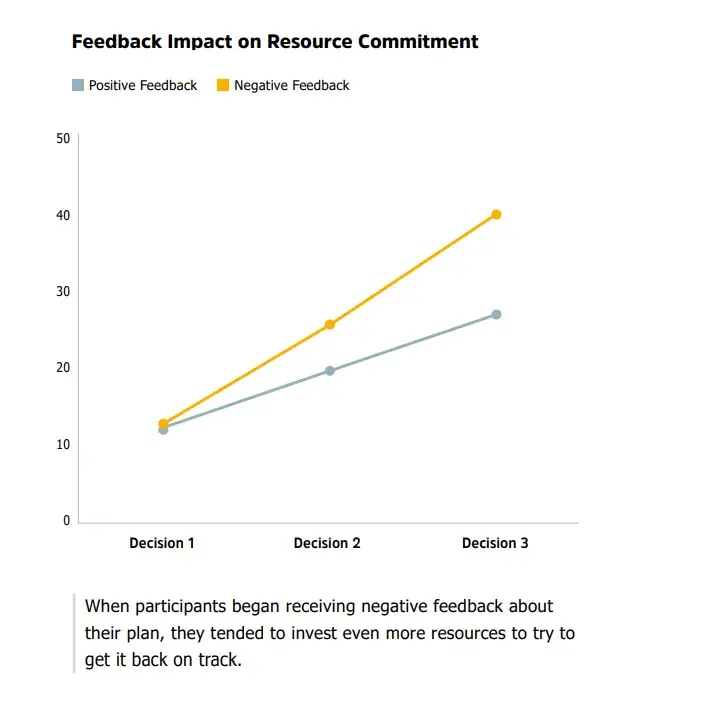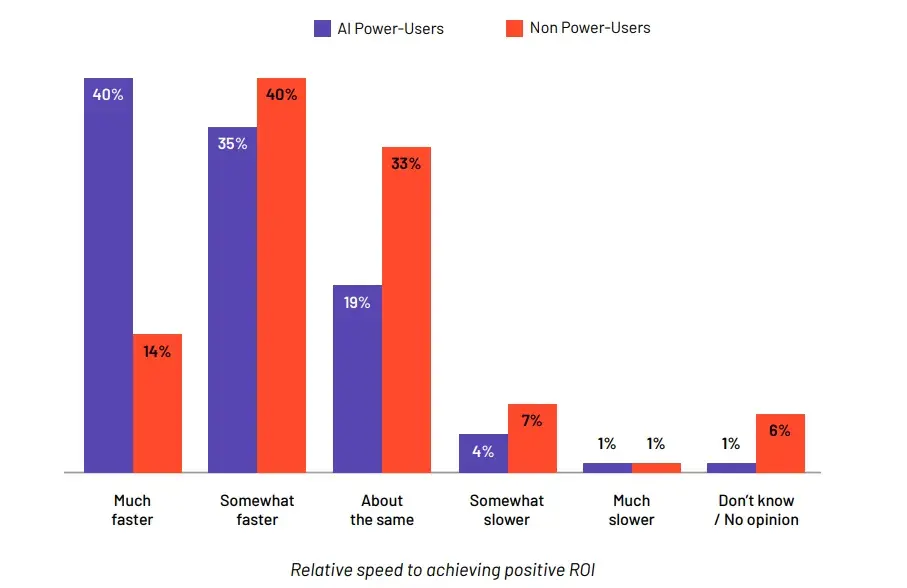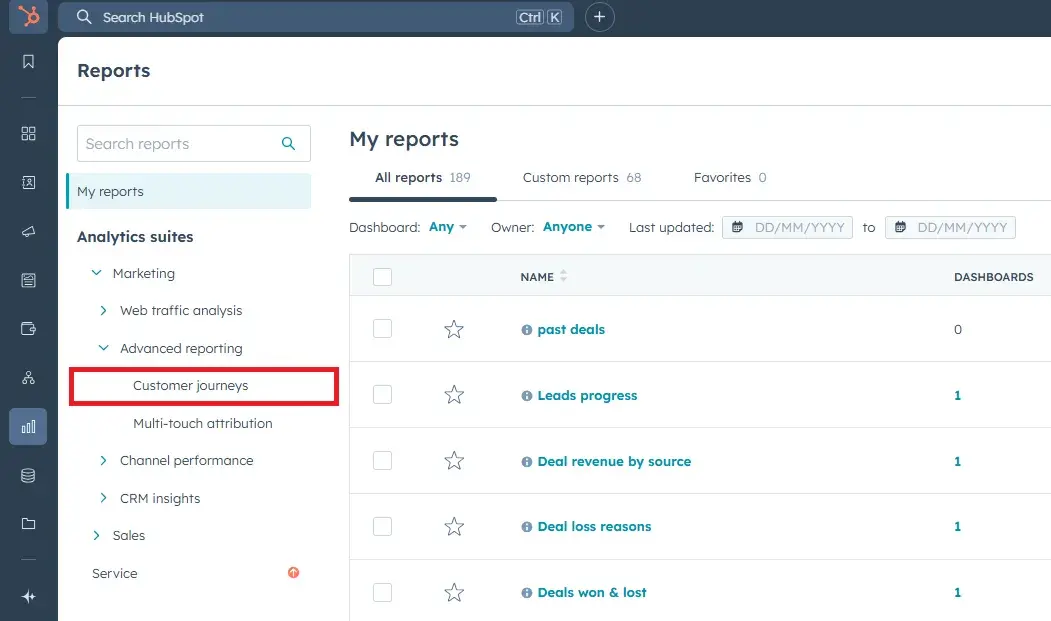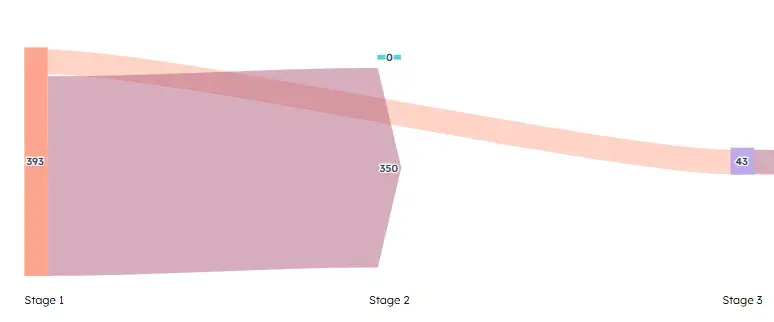Table of Contents
- What the Buyer's Journey Looks Like for Consumers in 2025
- How the Buyer's Journey Is Changing: Trends From My Buyer’s Journey Research
- HubSpot’s Customer Journey Analytics Tool
- Final Takeaways About Buyer’s Journey
What the Buyer's Journey Looks Like for Consumers in 2025
The buyer’s journey has evolved significantly over the years. While the traditional awareness–consideration–decision framework still holds value, I think it’s rapidly being reshaped by real-world experiences that influence how buyers make decisions today.
If you’re unfamiliar with the concept of the buyer’s journey, I recommend starting with this quick read.
To get a clearer picture of how the buyer’s journey looks in today’s landscape, I’ve explored recent research and studies. I’ll first walk you through the key findings from those reports (including what they reveal about modern buying behavior) and then share my own takeaways and insights.
Emblaze
In their report, Discovery Isn’t Dead - How to De-Escalate Committed Buyers, Dr. Leff Bonney points out that the buyer’s journey has changed, but discovery conversations haven’t caught up.
Today’s buyers do most of their research independently (often using AI) and are typically 50–70% through their decision before speaking to sales. But being far along doesn’t mean they’re on the right track.
Many buyers become deeply committed to the wrong solution due to a bias known as “escalation of commitment,” where emotional or financial investment makes them resist change. The biggest problem of sellers is that they struggle to identify this and guide buyers toward a better path.
The escalation of commitment is mainly caused due to cognitive dissonance and sunk costs fallacy.

A key insight from the research is that negative feedback leads to investing more resources. For example, executives who made substantial initial purchases were more likely to double down and commit even more resources by the third decision point — despite earlier setbacks.

Nowadays buyers enter the conversation having already made significant progress on their own. This shift means sellers must quickly evaluate whether the buyer is heading in the right direction. And also be ready to tactfully redirect them when they’re not.
Gartner
Gartner’s study, B2B Buying: How Top CSOs and CMOs Optimize the Journey, highlights that the key to mapping an effective buyer journey is delivering integrated and consistent engagement across all touchpoints.
When buyers experience strong alignment between a supplier’s website and their conversations with sales representatives, they’re 2.8 times more likely to close a high-quality deal. Consistency in messaging builds trust. And trust drives conversions.
How much of the buyer’s journey is digital?
Much of the buyer’s journey nowadays has become digital. Gartner found out that B2B buyers are 1.8 times more likely to close a high-quality deal when they use supplier-provided digital tools alongside guidance from a sales representative.
The study highlights the importance of integrating the digital experience with the human experience.

Weaving value-framing, value-affirming content, and buyer engagement insights directly into the seller’s workflow better guides conversations and drives stronger outcomes.
Again this is proven by data.
Buyers are 2.3 times more likely to feel assured about the value of their purchase when engaging with supplier representatives than when interacting with digital channels.
Buyers who make purchases through digital self-service channels are 1.65 times more likely to experience regret compared to those who buy through traditional, rep-led interactions. On the other hand, when sales reps assist buyers during the digital purchase journey, the likelihood of regret is cut in half.
G2
In 2024’s Buyer Behavior Report, G2 has packed up a lot of decent findings. Let’s start with the ROI metric that everyone seems to have on the top of their mind when they make any purchase
decision. Of the survey respondents, 78% said that they expect ROI within 6 months of implementing software.
As AI-powered software is becoming more prevalent in the market, ROI expectations are shifting as well.

An impressive 75% expect their company to achieve a positive ROI on AI investments faster than with other investments. In contrast, only 54% of non-power-users share this expectation.
Distrust in vendor websites is growing — 9% of buyers now see them as unreliable, up from just 3% last year, making it a leading barrier to purchase decisions.
In fact, buyers today trust their peers more than traditional analyst firms. Of software buyers, 82% say peer experiences heavily influence their choice of provider, highlighting the power of word-of-mouth in the decision-making process.
Another interesting finding is that when asked which sources they found most valuable throughout the buying process, respondents consistently favored independent software and service review sites at every stage of their journey. When buyers refer to review websites, they are most interested in the pricing information.
TrustRadius
I think the title of TrustRadius’s research report is telling: 2024 B2B Buying Disconnect Report: The Year of the Brand Crisis. To better understand the buyer’s journey, the study explored key insights around buying cycles and the composition of buying groups.
When segmented by company size, small (53%) and mid-sized (39%) businesses typically have 2–3 people in buying groups. Enterprises (34%) typically have buying groups that peak at 4 to 5 members, as shown below:

As for timelines, 87% of buyers complete their purchases within a six-month sales cycle.
It’s standard practice for buyers to create a shortlist when evaluating purchase options. Most shortlists (63%) include just two to three products, and 96% have five or fewer.
When evaluating options, 66% of buyers prefer established market leaders over niche (19%) or new (11%) products. Notably, 78% choose products they were already familiar with before beginning their research. For enterprise buyers, 86% shortlist products they’ve heard of before starting research.
Once the shortlist is made, 71% stick with their initial top choice, while only 12% switch to another option. And since 78% of buyers start their research on Google, it’s clear why brand-led growth (BLG) companies with strong brand recognition and solid SEO consistently outperform in the B2B space.
How the Buyer's Journey Is Changing: Trends From My Buyer’s Journey Research
Brand-building is key to gaining customers.
Making it onto a buyer’s shortlist significantly boosts your chances of being selected. In fact, if your product is already known to the buyer, there’s over a 75% chance it will make the shortlist. Given this, I think it’s clear that brand building and awareness play a crucial role in influencing purchase decisions.
People are looking for authentic product reviews.
In the past, product reviews played a major role in influencing purchase decisions. But today, consumers are increasingly skeptical of reviews on websites and platforms like Amazon, largely due to the rise of fake or overly polished feedback.
Consumers and buyers are now researching products and tools differently. They turn to communities like Reddit, where discussions are raw, unfiltered, and often more trustworthy than website reviews. The peer insights there help buyers feel confident that others have successfully navigated the same journey.
I think as people are becoming better at spotting what’s inauthentic, they’re placing more trust in genuine, peer-driven recommendations instead (which brings me to my next point).
Delight your current customers so they recommend your brand.
As buying behavior is evolving, people are turning to peers, colleagues, and networks for recommendations before making a purchase. That’s why a company’s long-term strategy should prioritize leaving a lasting, positive impression on current customers.
I suggest always going the extra mile to delight your existing customers. Whether it’s building a custom feature they’ve asked for or including a small, thoughtful gift with your product. Basically any gesture that helps keep your brand top of mind. When customers feel valued, they’re far more likely to share their positive experience with others.
Regularly check in with customers to ensure they’re finding value. And guide them to support when needed. The aim is to build strong relationships that naturally lead to positive, voluntary reviews and referrals.
For example: Someone might come across an honest LinkedIn post where a peer shares a challenge they faced and how a tool helped solve it. This kind of authenticity instantly builds credibility — especially when the reader knows or relates to the person sharing the experience.
Improve the buyer’s journey with real data.
From my experience, the real way to improve the buyer’s journey is by looking at my customers’ data to capture real, unfiltered customer sentiment from the channels they naturally engage in.
The following are some of the best ways to get that valuable data:
- Sales pitch and discovery calls.
- Product demos and walkthroughs.
- YouTube video comments.
- Customer support or service call recordings.
- One-on-one customer interviews.
- Chatbot conversations and scripts.
- Quick polls and in-app surveys.
- Reddit discussions and threads.
- Quora answers and discussions.
- Slack, Discord, and Microsoft Teams conversations (whichever is applicable).
Even if you’re only using some of these channels, you already have a valuable stream of qualitative feedback from which you can understand your audience, identify pain points, improve messaging, and shape product direction with more confidence.
Maximize ROI for your customers.
When it comes to ROI, the smartest approach is to lead with a focused offering. It can be a small plan or a core feature that tackles the buyer’s biggest pain point right away.
If your solution delivers measurable results within the first few months, and the initial investment is modest, it builds trust. From my experience, that’s when customers are most open to expanding their commitment through add-ons or additional features.
Understand your buyer’s day-to-day.
A great place to start is by mapping out “a day in the life” of your B2B buyer. Take time to understand what kind of content they consume, which touchpoints they interact with, and how they make decisions. (Check out the next section, where I discuss more about customer journey analytics.)
This exercise can reveal key insights into their behaviors, pain points, and priorities. Once you have a buyer persona that actually reflects reality, you’ll be in a much stronger position to understand the buyer’s journey.
And the best way to do this? Talk to real people in the roles you’re targeting. If you don’t personally know anyone who fits your ideal buyer profile, consider reaching out on LinkedIn with a polite request for a 20-30 minute chat. Just one conversation can uncover insights you’d never get from assumptions or guesswork.
As Gartner’s research suggested, buyers feel more confident when speaking with a real person. That’s why I believe the core job of modern sellers is to instill a sense of confidence and control in their buyers throughout the purchasing process.
How To Make An Effective Customer Journey Map In 1 Hour (FREE Templates)
HubSpot’s Customer Journey Analytics Tool
HubSpot’s Customer Journey Analytics tool is specifically made to understand how prospects and customers interact with your business. To build customer journeys in HubSpot, navigate to Advanced Reporting and select Lifecycle Stage Progression.

Based on my experience managing HubSpot for a client with a small team, I tailored the customer journey to fit their workflow. Given the limited marketing resources, I marked the MQL stage as optional — leads were passed directly to the sales team since there weren’t dedicated marketing personnel handling lead qualification.

Looking at the buyer’s journey through this lens, I can easily see that we generated 393 leads in the previous quarter, out of which 43 progressed to become SQLs.
In addition to getting a visual breakdown of how leads move through each stage, I get the option to display drop-off points:

This way I pinpoint where customers are exiting the journey. I can also customize the date range to focus on the specific period that I want to analyze and base my decisions on.
Let’s discuss what I particularly enjoy about HubSpot for building and analyzing the buyer’s journey.
What I like about creating my buyer’s journey in HubSpot
HubSpot has a wide range of options that help in tracking customer journeys. Using HubSpot’s powerful attribution reporting, I have the flexibility to identify which interactions — blog views, form submissions, and deal creation — directly influence conversions and revenue.
For instance, here’s my conversion data in a streamlined and intuitive interface:

With this kind of data visualization, it is easy for me to quickly grasp how campaigns are performing.
Here’s the ideal flow for optimizing my marketing and sales efforts with confidence:
- Measure blog performance by checking total views, AMP views, and bounce rates and compare that data to the previous 30-day period.
- View the activity of recently created contacts, such as who submitted a form in the last 30 days.
- Use multi-touch attribution models to evaluate how my marketing efforts contributed to key outcomes such as revenue generation, deal creation, and new contact acquisition.
The best part about this buyer’s journey tool is that I can add filters and define custom stages to show progress through the contact or deal journey. To deep-dive more into the specifics of customer journey analytics, I recommend watching this video:
https://youtu.be/s39HO5JDXSQ?si=RtHsEw 9d7889vDIq
Final Takeaways About Buyer’s Journey
Understanding the buyer’s journey is essential for both sales and marketing success. That’s why staying in tune with how it’s evolving and where it’s headed should be a priority for any business.
The data you collect through your sales efforts offers valuable insights into your audience. It helps you define clear customer archetypes and craft more targeted, effective marketing strategies. I think using customer journey reports is the best way to analyze every touchpoint in the customer experience.
Building and showcasing positive customer reviews ultimately comes down to trust. Remember that consumers trust existing customers more than they do businesses. And existing consumers are more inclined to trust businesses that care about them.
My opinion is that sales teams can play a key role here by staying connected with converted customers, ensuring they’re getting real value from the product or service.
At the end of the day, it all comes down to this: Know exactly who you’re trying to reach and make sure they feel seen, supported, and confident in their decision to choose you.


.webp)

![B2B Sales Experience: 12 Best Ways to Delight Prospects [Examples]](https://53.fs1.hubspotusercontent-na1.net/hubfs/53/b2b-sales-experience-1-20250516-6151471.webp)


![What is the Buyer’s Journey? [+ My Tips for Applying it to Your Sales Cycle]](https://53.fs1.hubspotusercontent-na1.net/hubfs/53/copy%20of%20jade%20walters%20btb%20(25).png)
